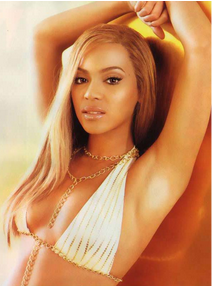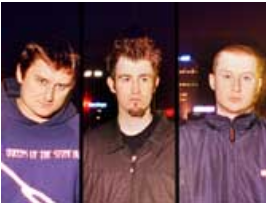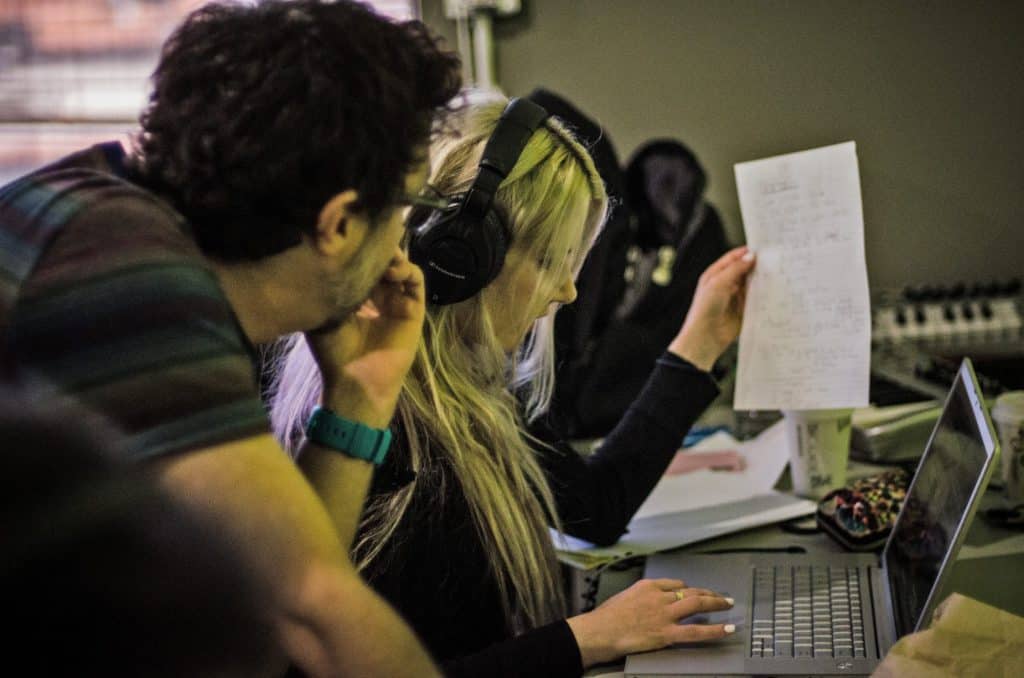Rhythm!
Rhythm!
 The rhythmic basis of a song has never been more important than it is today, but you might be fooled into thinking that this importance is a modern phenomenon. Nothing could be further from the truth! We could trace the role of rhythm in hit writing through the ages to the dawn of civilization, but going back to the 1950s is good enough for our purposes.
The rhythmic basis of a song has never been more important than it is today, but you might be fooled into thinking that this importance is a modern phenomenon. Nothing could be further from the truth! We could trace the role of rhythm in hit writing through the ages to the dawn of civilization, but going back to the 1950s is good enough for our purposes.
The break through of Rock and Roll in this decade brought the importance of up-tempo, steady grooves out of Jazz and Blues and into mainstream popular culture, where it has remained ever since. And it would unwise to underplay the importance that Hip Hop has had on modern music, bringing repetitive, unchanging drum patterns into nearly all forms of popular music.
 Of course, the technology that became available to the popular musician in the 1970s has had a major role in shaping the rhythms of the 21st century. Without the drum machine, sampler and sequencer we would not have any of the modern music we take for granted today.
Of course, the technology that became available to the popular musician in the 1970s has had a major role in shaping the rhythms of the 21st century. Without the drum machine, sampler and sequencer we would not have any of the modern music we take for granted today.
This section of the handout gives you an introduction to some Modern Rhythmic Styles. It is by no means definitive, but gives you an overview to many of the styles you will encounter on a day-to-day basis. Please bare in mind that although in every art form there are plenty of exceptions to the rules, it’s always a good idea to know what the rules are to start with!
House
Defining qualities:
- Regular strong kick drum on every quarter beat
- Regular open hi hat sound (or similar) on every off beat
- Snare, Clap or similar sound on the second and forth beat of each bar.
- May often include additional percussion parts, usually following a sixteenths pace.
- Tempo: 115-150 BPM
Additional points:
The development of house music through the last two decades has been greatly influenced by the sound of a few different drum machines: The Roland TR909, the Roland TR808 and to a lesser (but growing) extent the Linndrum. Many of the original qualities of house music grew out of the limited way it was possible to program these drum machines, their inherent sound being mechanical and repetitive. This steady simple pulse is ideal for dancing, hence the enduring popularity of this style.
 Please note: This definition of a house beat can be applied to a wide variety of musical styles including Trance, Techno, and Acid House et al. Despite what many devotees of these styles may tell you, they are all rhythmically quite similar.
Please note: This definition of a house beat can be applied to a wide variety of musical styles including Trance, Techno, and Acid House et al. Despite what many devotees of these styles may tell you, they are all rhythmically quite similar.
Examples:
Dj Jean: The Launch
Chicane: Salt Water
Basement Jaxx: Where’s Your Head At?
Modern RnB
Defining qualities:
- Strong kick drum on the down beat of most bars
- Often a weak kick drum hit on the offbeat after beat 3.
- Snare, Clap or similar sound on the second and forth beat of each bar.
- Simple hi hat pattern, usually following a sixteenths pace.
- Tempo: 70-110 BPM
Additional points:
RnB has influenced most modern pop music in some way. The style is very repetitive, often simple drum patterns repeating throughout a song with some variations/fills building anticipation for a chorus etc.
These days, the drum sounds used in RnB songs tend to be very dry, short samples of live drums that may have been affected in some way. Often you can hear the use of more than one kick drum sound: A bright, tight main kick complimented with a very deep dull kick sound. Eamon’s ‘I Don’t Want You Now’ is a good example of this technique.
Also, note how much ‘space’ there is in RnB drum tracks, short moments where although the groove is moving along nicely, there are no drums actually playing at all! This is a definite case of less is more.
 Examples:
Examples:
B2K feat P.Diddy: Bump Bump Bump
Pharell: Frontin
Missy Elliot: Work It
Kelis: Milkshake
Modern RnB/Urban (Syncopated)
Defining qualities:
- Strong kick drum on the down beat of most bars
- Snare parts not occurring on beats 2 and 4 but following a more syncopated pattern.
- Simple hi hat pattern, usually following a sixteenths pace.
- Tempo: 70-110 BPM
Additional points:
Although this style uses the same kind of drum sounds as more typical RnB, the rhythm is quite different. Heavily influenced by Eastern rhythms (and possibly Ragga) this style has been popular for the last five years or so. There are many variations within this style, but the overall impression is one of energy even though the tempo of the song tends to be quite slow (70-90 BPM).
 Examples:
Examples:
Blu Cantrell: Make Me Wanna Scream
Beyonce Knowles: Baby Boy
Missy Elliot: Get U’r Freak on
Holly Valance: Kiss Kiss
Hip Hop (Rap)
Defining qualities:
- Strong kick drum on the down beat of most bars
- Often a weak kick drum hit on the offbeat after beat 2.
- Snare, Clap or similar sound on the second and forth beat of each bar.
- Simple hi hat pattern, usually following a eighths pace
- Simple 1 or 2 bar pattern with little or no variation through the song
- Tempo: 70-110 BPM
Additional points:
It is clear to anyone who listens to RnB that this rhythmical style has grown out of Hip Hop. There are some subtle differences though. Possibly the biggest difference is in the choice of drum sound and the highly repetitive nature of the Hip Hop style. The Hip Hop style grew out of looping a break found on Jazz Funk records from the 60s and 70s, originally with the use of record decks and two copies of the same record. The hypnotic nature of much Hip Hop can be attributed to the looping of a bar or two of music as a drumbeat that repeats throughout the song.
Also, as much Hip Hop is based on the looping of sections of drums played by an actual drummer, the drum parts tend to sound less quantized and have more feel. As the drum sounds are typically from recordings made from the 1960s/70s, they tend to sound more live and often grungy compared to the sound of modern drums. Often you can clearly hear the sound of the Live Room where the original recording was made.
Examples:
Public Enemy: Rebel Without a Pause
Eminem: My Name Is
50 Cent: In Da Club
Jay Z: Bonnie and Clyde
Examples of records including Break Beats:
James Brown: Funky Drummer
Herman Kelly: Dance to the Drummer’s Beat
Michael Viner’s Incredible Bongo Band: Apache
Drum ‘n Bass
Defining qualities:
- Strong kick drum on the down beat of most bars
- Weak kick drum hit on the offbeat after the snare hit on beat 2.
- Snare, Clap or similar sound on the second and forth beat of each bar.
- Simple hi hat pattern, usually following a eighths pace
- Simple 1 or 2 bar pattern with little or no variation through the song
- Tempo: 150-190 BPM
Additional points:
Hip Hop and Drum ‘n Bass are both styles that have grown out of the technique of looping breakbeats as the basis of the drum parts for the song. However, no one could confuse the two styles! Drum ‘n Bass is much faster, with the tempo of most tracks being around 170 BPM. Also, these days most Drum ‘n Bass records feature quantized individual drum samples rather than breakbeats for their drum sounds.
Drum ‘n Bass grew out of a related style which was known (albeit briefly) as Jungle. This style grew out of the technique of speeding up the drummer’s break in records such as ‘Amen Brother’ by the Winstons and ‘Think’ by Lyn Collins, breaks already popular in Hip Hop. But Jungle wasn’t just speeded up drum beats: the breaks were often split up into individual drum hits or groups of drum hits that were then reordered or simply repeated by the programmers creating a whole new rhythm based on the original breaks. Often, the effect of this was to produce a very busy syncopated drum part.
 Examples:
Examples:
Roni Size: Strictly Social
Puretone: Addicted to Bass
Omni Trio: Rollin’ Heights
Deep Blue: Helicopter Song
Pendulum: No Sound
Modern Rock
Defining qualities:
- Strong kick drum on the down beat of most bars
- Snare sound on the second and forth beat of each bar.
- Hi hat pattern, usually following a eighths pace
- Tempo: 80-140 BPM
Additional qualities:
Possibly the most important thing to remember when programming drums for rock music is that the whole style is defined by what is actually possible for a drummer to play! So, as a rule of thumb, don’t program more than a maximum of three sounds playing at the same time e.g. Kick, Snare and Hi Hat. In a situation where you feel there should be a crash cymbal as well as the other three parts, a good rule of thumb is to leave out the hi hat hit as it will be the part missed the least.
Beyond that, most modern rock drum patterns are repetitive and many have been influenced by Hip Hop (especially Nu Metal). Also, although many drummers these days are very experienced at playing a simple repetitive groove, they often include slight variations to what they play throughout a song. Examples of this can be fills, flams, minor variations of the hi-hat part, additional crash cymbal hits accenting important lyrics etc.
Please bare in mind that although most ‘played live’ drum patterns are repetitive, the playing is not. Often, a live drummer will unconsciously vary the feel of what she is playing, maybe relaxing the rhythm of the hi-hat in a verse or being slightly early hitting the snare drum. Be aware of this when programming rock drums, you need to make sure that your drum part does not sound robotic!
Examples:
Coldplay: In My Place
Busted: Year 3000
Snow Patrol: Chocolate (Motown Beat)
The Darkness: Love is only a Feeling

